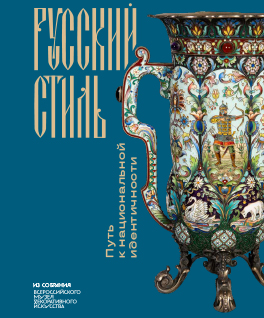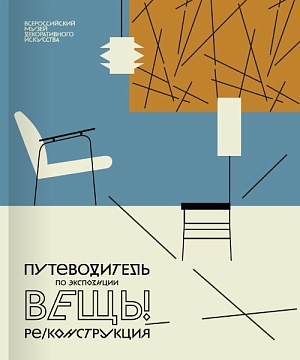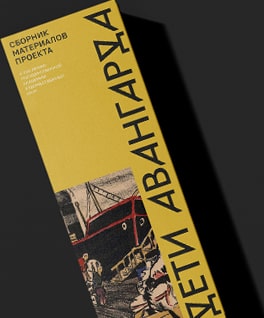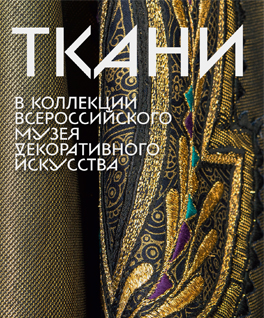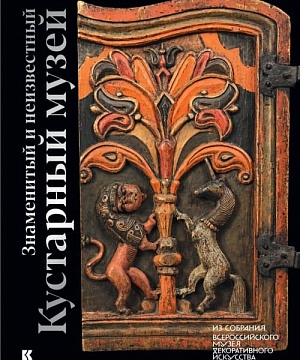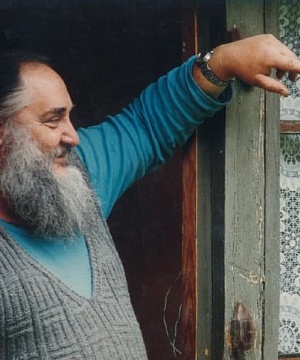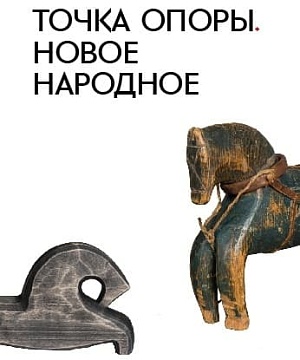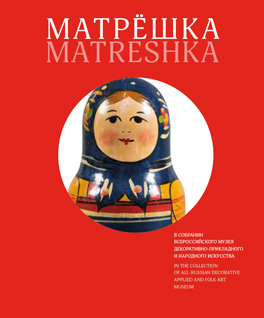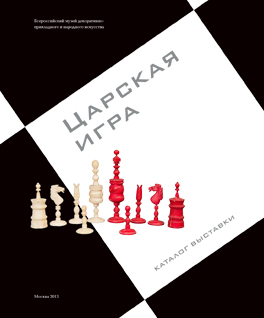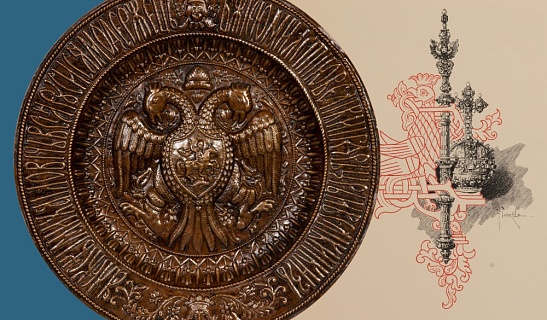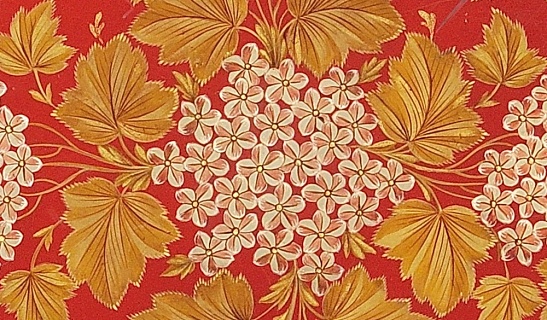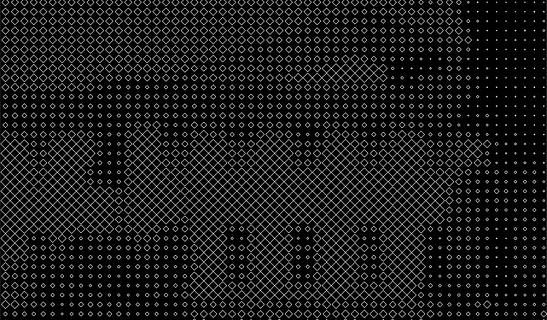The All-Russian Decorative Art Museum is the only specialized museum that collects, stores and studies works of decorative art, folk art and design not so much as material culture artifacts, but primarily as pieces of art, of art history. Since its origin, the museum has been involved in extensive work, studying its own collection. This is a necessary step, which must be done before the museum collection can be presented in publishing, exhibition, academic, educational or awareness-raising projects.
The most important area of academic research is the attribution and scholarly description of collection items, both existing and new ones. In 1991, the museum received part of the collection of artistic textiles of Nataliya Shabelskaya, a famous collector and researcher of Russian art. Thirty years later, work is still underway to study and attribute collection items (to ascertain their dates, names, places of manufacture). Once this work has been completed, these objects will be incorporated in exhibition projects, and will feature in publications.
In 1999, the museum received a large collection of the Scientific Research Institute of the Art Industry (NIIKhP), which included a unique assemblage of the Museum of Folk Art (until 1931, Moscow Handicraft Museum), an extensive photo library and a large research library. The items from NIIKhP were received in poor condition, practically entirely lacking any accompanying documentation. Through the efforts of the specialists working on those holdings, most of the exhibits were attributed, described and introduced into scholarly discourse. This set of objects allows us to take a fresh look at some periods in the development of decorative arts, at the emergence and evolution of the “Russian style,” a distinct art movement. These activities, however, continue, and require painstaking academic research and adjustments.
The NIIKhP archives and research library represent the most poorly studied part of the collection, which still needs to be introduced into scholarly discourse. It includes large sets of image sources, materials of the institute’s research expeditions, rare printed publications, and specialized periodicals. All these materials could be used to study the stages of the evolution of decorative arts and folk crafts, the origin and development of the Soviet and Russian design throughout the XX century. The holdings of the museum’s research archives and library have an enormous scholarly potential; they can become a source of interdisciplinary and cross-cultural projects, as well as publishing programs. Studying these holdings and their introduction into scholarly discourse is a top priority in the museum’s research endeavors.
In 2020, the museum came into possession of a most valuable collection of architectural graphics created by Alexey Schusev and his workshop. Since 2020, the Department of Manuscripts and Research Documentation has been carrying out extensive work to attribute, describe and systematize this collection of architectural graphics. The results of this work will be presented in 2023, on the occasion of the 150th anniversary of the architect’s birth. An exhibition project will be implemented, alongside a cultural dissemination and educational program, and a scholarly art album/catalog will be released.
In 2017, after the establishment of the Fashion and Design Center in the museum, development of an academic concept for the first state-owned object design collection began. As part of this work, an expert board was set up, which consists of leading specialists in this field. Together with experts, the museum staff are conducting research and methodological work to develop rules and standards for the acquisition of modern design items in order to enlarge traditional museum collections.
Another important vector of research work involves holding academic conferences and round-table discussions both on decorative arts and a wide range of issues of art history and humanities. In recent decades, the following events have been held: Victor Vasilenko memorial readings, “Epoch. Man. Thing”; an international conference, “Modern Russian Lacquer Miniature”; a cycle of round-table discussions dedicated to traditional folk culture, ornament and décor, legacy of the Handicraft Museum, and modern design.
From 2021 on, the museum plans to hold an annual academic and practical conference, which is intended to become a forum for discussing not only issues related to the storage and research of the arts and crafts legacy, but also a wide range of sociocultural problems associated with the development of society, scholarship, technology, spiritual and artistic culture. Every year, the conference will showcase academic findings of the museum staff. Invitations for attendance will be sent out to Russian and international scholars, experts, museums, academic and educational institutions, and specialized communities.
The museum staff regularly make presentations at specialized research conferences, symposia, round-table discussions in Russia, CIS countries, and abroad. The museum is a member of inter-museum associations: the Union of Russian Museums and the ICOM. This allows it to expand its network of contacts, to strengthen its prestige within the expert community, to develop inter-institutional and cross-cultural cooperation, to attract new partners, and to implement joint projects.
Publishing activities
Another major vector of the museum’s academic work is publishing. The museum’s publishing program includes preparation and release of scholarly reference books, academic monographs, catalogs, albums, booklets, series of presentation art publications, e-books. A few essential albums have already been released:
/ Pirogov, L.L. Lacquer Miniature. Palekh, Moscow, 2001;
/ Russian Glassware. From the Collection of the The All-Russian Decorative Art Museum, Moscow, 2014;
/ Lace: From Intimate Fashion to Ideological Panels, Moscow, 2016;
/ Pirogov, L.L. Russian History. The XX century in Lacquer Miniature, Moscow, 2017;
/ Inside Light. Artistic Glassware of the Soviet and Post-Soviet Eras, Moscow, 2019.
One of the museum’s long-term research and publishing projects is the General Catalog. The aim of the project is to showcase the abundance and uniqueness of the museum collection, its history, academic and exhibition value, as well as the result of the staff’s work on the acquisition, systematization and academic description of the holdings. A new catalog, Soviet Porcelain (Tin-Glazed Pottery, Ceramics) of the 1920s to 1941 in the Collection of the All-Russian Decorative Art Museum (compiled by Elena M. Vorushilina), is currently being prepared for publication and is due to come out in 2022.
The museum’s publishing activities are based on its holdings. The academic and research capabilities of the museum staff are engaged, the professional expert community (authors, academic consultants, artists, designers) is involved, and partnership of museums and large publishing houses is sought in these pursuits.
To support academic and publishing activities, the museum advances another vector in its work, namely a program of interaction with state-controlled and private foundations providing grants and subsidies.
Science-based restoration
From the very beginning, the museum has been engaged in extensive science-based restoration. The museum’s specialists restore woodwork and furniture, polychrome sculptures, ceramics, glassware, stones, fabrics, leather items, lacquer miniatures and paintings, metalwork, book bindings, articles made of bone and mother of pearl. Working with intricate exhibits and materials, the museum’s restorers, skillful professionals with many years of experience, have developed their own unique approaches. All the restorers have been certified by the Ministry of Culture of the Russian Federation.
The museum’s restorers organize individual advanced training classes for young specialists from other museums, teaching them methods of restoring of woodwork, leather items, glassware, ceramics, bone articles. Moreover, they offer consultations and carry out restoration works on decorative art pieces for other museums in the country. Among the partners of our museum, we have the Kursk State Regional Museum of Archeology, the Radischev State Art Museum in Saratov, the Ulyanovsk Regional Art Museum, the State Historical Museum-Reserve “Gorki Leninskie”, the Glinka Russian National Museum of Music, the Morshansk Museum of History and Art, the Murom Museum of History and Art, and others.
Publications
Events
Начальник отдела: Юлия Валентиновна Сергунина
u.sergunina@damuseum.ru
8 (495) 609-01-58





